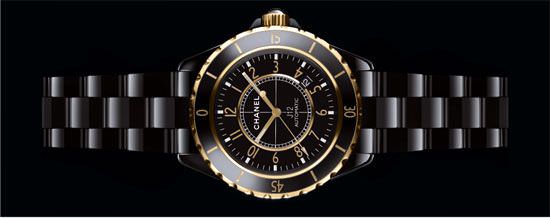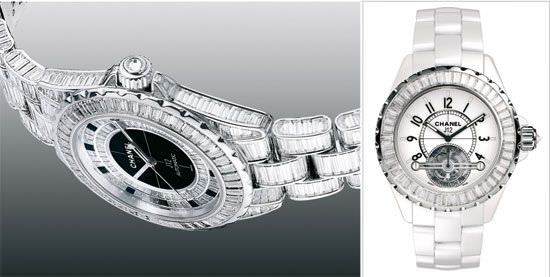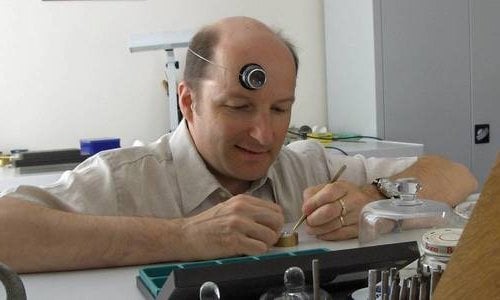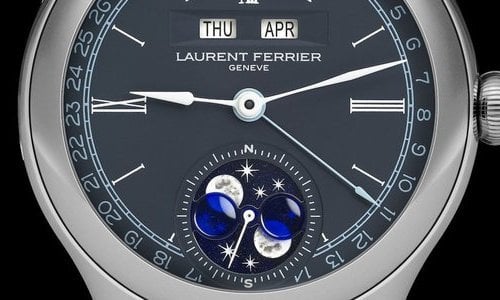The J12 by Chanel has an exceptional destiny. Ever since its creation by the late Jacques Helleu, it has made an enormous impact on the watch scene—even to the point of becoming nearly ‘iconic’ in stature. One of the main reasons for this status is undoubtedly the significant and innovative use of ceramic, which has made, along with the timepiece, its entrance into the glamourous world of fashion.
Up to that point, ceramic—on which Rado built its historic legitimacy—had a rather technical and masculine connotation. With the J12 by Chanel, however, this exceptionally hard and resistant material acquired another aura. Yet, in addition to its use of ceramic, the success of the J12 also comes from the quality of its design, its internal harmony, and its visual equilibrium, which conceals a veritable technical rigour underneath the appearance of great simplicity. All of this made the watch a definite ‘classic’ in a short time.

J12 CALIBRE 3125
First step into watches, the tourbillon
It was still necessary for the J12 to earn its watchmaking stripes, which today are essentially obtained on the mechanical side. To earn this watchmaking authenticity, the J12 began, three years ago, working in the domain of the tourbillon. The operation was a success.
During a feverous era where a plethora of tourbillons was offered by nearly everyone, the J12 Tourbillon proposed by Chanel was particularly remarkable. This was due perhaps to the fact that the brand created the first tourbillon on ceramic platinum, but it does not explain the whole story. To understand the great attraction of this piece, we need to look at its appearance. It was a sort of confirmation, or more precisely, the confirmation of the iconic status of its shape. By perfectly integrating a timekeeping specialty such as the tourbillon into the J12, the brand fully demonstrated its capacity to become a complete watchmaker while totally conserving its particular character. The J12 demonstrated its ‘versatility’ from a design point of view by creating magnificent stone-set pieces, as well as very sporty versions, such as the Superleggera, where ceramic was subtly combined with aluminium.

J12 JOAILLERIE and J12 TOURBILLON
Confirmation
With its new J12 Calibre 3125, created in collaboration with Audemars Piguet, Chanel intends to prove that its incursion into the world of ‘real’ timekeeping (what some call ‘Haute Horlogerie’) is not merely a passing fancy but a well-considered determination.
The partnership between Chanel and Audemars Piguet offers the possibility of equipping the J12 with a mechanical movement of the purest tradition, with some el-ements having been redesigned for the occasion. The Chanel movement—AP 3125—is composed of 278 component parts, and features a thickness of 4.55mm and a diameter of 26.60mm. It is equipped with a gold rotor that is lined, quite naturally one might say, with black ceramic, and mounted on ceramic ball bearings. The balance cross bar has been entirely redesigned.
The automatic movement is equipped with a large balance, which is adjustable using eight inertia blocks, and a barrel with ‘constant friction values’ giving it a power reserve of 60 hours. Moreover, the movement has a stop lever for the seconds thus allowing the time to be set precisely as well as a mechan-ism for rapid correction of the date. The watch’s finishing is up to the standards of the brand’s prestige: decoration of the bridges with the CÔtes de GenÈve pattern, gilded and decorated non-functional surfaces, chamfered arms, polished pinions, etc. The case of the J12 Calibre 3125 is available in 18 carat yellow gold and black ceramic on a ceramic bracelet.
While Chanel is seeking, in this operation, to strengthen its watchmaking legitimacy, Audemars Piguet, on the other hand, con-siders this a good “opportunity to increase the brand’s visibility and enhance its reputation with women,” says Georges-Henri Meylan, Managing Director of Audemars Piguet. Beyond all these considerations, the joint venture is also about the “strong attachment to independence” that the two companies share.
Source: Europa Star April-May 2008 Magazine Issue




